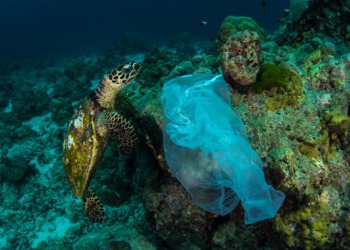How far would you go to get an education? Education is one’s way out of poverty. Without access to it, how does one get out of poverty? Some kids are fortunate enough to get full access to education without thinking how to get to school or if they can even continue going to school. Some have to wade through the waters to get to school.
Dr. Anton Lim talks about how the Yellow Boat of Hope Foundation helps children in remote communities get to school and implement programs that help these children continue their education and their parents make a living.
The Yellow Boat of Hope Foundation started out as a national movement in 2010 that helped children get to school in Zamboanga City. How did this movement start?
Dr. Anton Lim: Our Yellow Boat story started when Juljimar Gonzales relayed to my co-founder, Jay Jaboneta, about having seen kids in a mangrove community in Zamboanga City swimming to school with one hand holding a plastic bag containing their school uniform and school supplies and using the other hand to stay afloat. Jay posted this story on his Facebook wall: “Heard about kids swimming to go to school in Zamboanga City!” That post caught the attention of Marketing guru, Josiah Go, who shared it on his wall. That started a mini crowdsourcing. In just a week’s time, we raised a little over 70,000 pesos. We even received suggestions like building them a school, a bridge, an elevated walkway or buying them a speed boat.
It troubled me so much that I spent the following weeks looking for that community. It took me over a month to finally find the community. The community is called Layag-Layag. It is a few kilometers away from the Zamboanga city proper. It is not really visible because of the thick mangrove forest covering it. On my first visit aboard a small bangka (boat), I finally came face to face with poverty in the community. The informal settlers came from war-torn Sulu, mostly Tausug seaweed farmers and fishermen. They settled there to escape war and violence. They said life in Layag-Layag was very difficult but at least they can sleep soundly at night knowing their children are safe from violence and rido.
We believe talent is universal but opportunities are not. We are here to create more opportunities for the disadvantaged through education.
Families in Layag-Layag live in houses on stilts and approximately 5-10 kilometers away from the nearest dry land. I was able to confirm the story of kids swimming to school. I saw them swimming during my early morning visit. After a site and need assessment followed by a long discussion with the elders and leaders, it was decided that the fastest and most cost-effective solution to the problem is to build a boat big enough to transport 35-50 kids. It was envisioned to be school bus on water. We decided to paint it yellow with black markings to make it look like a school bus on water. The big motorized school boat cost 150,000 pesos. The Tzu Chi Foundation Zamboanga Liaison Office picked up the rest of the cost and became our local partner and lead implementor.
https://www.youtube.com/watch?v=DizRlrtCNVc&feature=youtu.be
Video credit: Yellow Boat of Hope Foundation
Looking back, it was the soundest decision we came up with. Sometimes the most complex problems can be solved with the simplest solution. Thus, the Zamboanga Funds for Little Kids, the forerunner of Yellow Boat of Hope Foundation was born. From that one boat we turned over last October 30, 2011, we are now nearing the 4,000-boat mark! From helping one community to over 95 communities nationwide.
The rest, as they say, is history. This story changed my life as well as hundreds of our volunteers nationwide. We call our volunteers Hope Paddlers.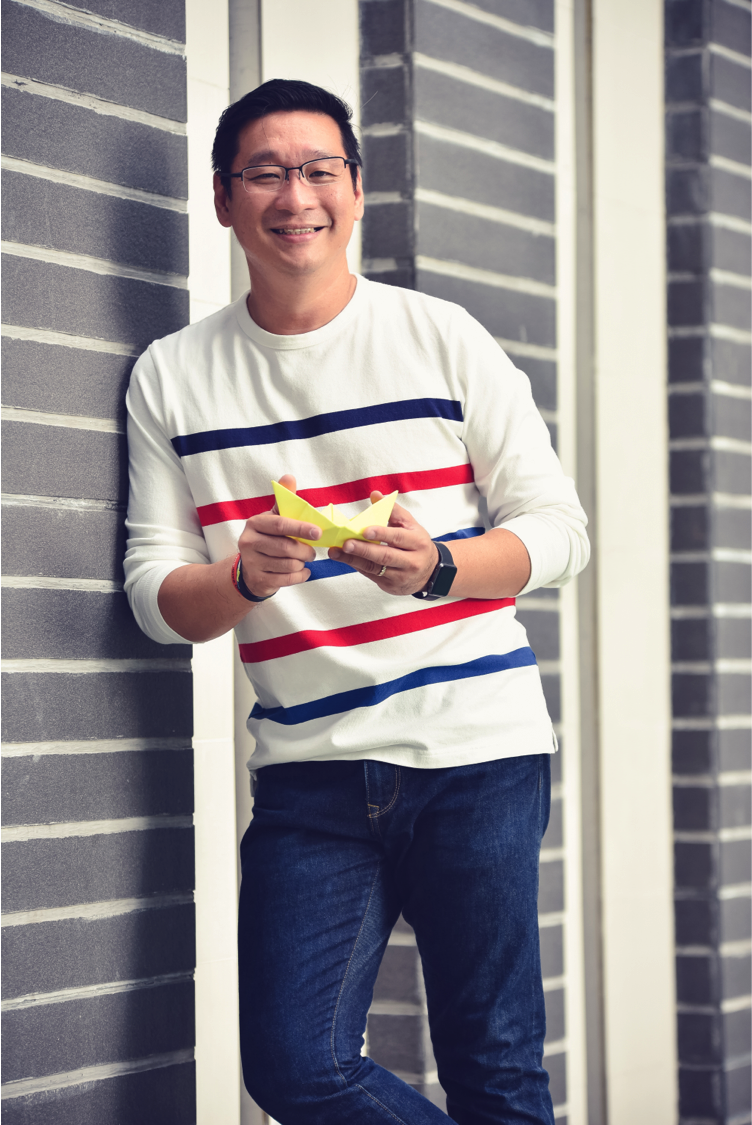
In the Photo: Dr. Anton Lim, Co-Founder/President and Chief Mentor of Yellow Boat of Hope Foundation. Photo credit: Yellow Boat of Hope Foundation
How do you gather funds for building these boats?
A.L: Most of our funds are gathered through social media: Facebook, Twitter, and Instagram. We have hope paddlers or yellow boat storytellers who give talks to schools, universities, and organizations or to anyone who wants to listen.
Describe the social impact you want to see happen with Yellow Boat of Hope Foundation.
A.L: We exist for EDUCATION. In a country where opportunities are far in between, education is the only way out of poverty. Our mission is to make it easier for kids to go to, stay in, and finish school. We believe talent is universal but opportunities are not. We are here to create more opportunities for the disadvantaged through education. We continue to innovate and build our organization like a LEGO puzzle: piece by piece – connect, adapt, and innovate with the times but with a single purpose in mind: ENSURE NO KID IS LEFT BEHIND!
The ultimate goal is for the foundation to one day be rendered useless because all kids are in school and they don’t need us anymore! That will be the DAY!
 Photo credit: Yellow Boat of Hope Foundation
Photo credit: Yellow Boat of Hope Foundation
How do you sustain your projects?
A.L: By having local implementors to lead the project, including a livelihood component in the project, and partnering with the schools that kids go to.
To date, how many communities have benefitted from the Yellow Boats Project? What are your other projects?
A.L: To date, there are 95 Yellow Boat communities nationwide and our other projects include:
- Adopt-A-Fisherman Project
- Yellow School of Hope
- Yellow Dorm of Hope
- Yellow Boat Adventures
- Alternative Learning System (ALS)- BANGKARUNUNGAN
- Yellow Bridge of Hope
How and why did you expand the Yellow Boat of Hope project? First, it was just a boat project. But now, that project gave rise to other projects mentioned above.
A.L: We thought that our involvement would end at the donation of one yellow school boat. But as we immersed ourselves and got to know more about the communities, we found out that access to education was only a portion of a bigger problem.
We don’t want to provide a band-aid solution. We want to change lives. As I’ve mentioned earlier, we have to ensure that no kid is left behind. That can only happen if they complete their education. After the Yellow School Boats project, we found out that the parents of our students were fishing or growing seaweeds using borrowed boats. If their catch for that day is only worth 1,000 pesos and the boat rental costs 500 pesos, you can just imagine how much they take home.
We want to also show the power of ONE…It proves that all it takes to change the world is for one person to care.
With income barely enough to put food on the table, how can you expect kids to stay in school? They will need their kids to help put food on the table. We encounter the same problem when calamity strikes. For instance, Typhoon Pablo. Hundreds of fishermen lost their boats. So, we started Adopt-A-Fisherman program to bring their livelihood back. As one fisherman said, why would we line up for a can of sardines when fresh fishes are plentiful? Give us boats and we will rebuild our lives and with livelihood, we can send back our kids to school.
It is a normal sequela that after improving access to school and providing livelihood, enrollment rate would increase. The school principal would email us that because of our projects, more parents were sending their kids to school. As a result, classrooms were overcrowded or there were no classrooms to accommodate the students. To solve this problem, the Yellow School Of Hope program was born.
 In the Photo: Adopt a Fisherman program, El Nido, Palawan. Photo credit: Yellow Boat of Hope Foundation
In the Photo: Adopt a Fisherman program, El Nido, Palawan. Photo credit: Yellow Boat of Hope Foundation
Not all impoverished areas are coastal. Some are land locked. We heard of kids hiking 5-10 hours to go to school across dangerous rivers, treacherous mountains, and even ravines. To address that, we built the Yellow Dorms Of Hope so that they could stay in the dormitory during weekdays and go home on weekends. This resulted to lower drop out rates.
The Yellow Boat Adventures is a unique project. It solves two problems at the same time: environment and livelihood. We started this project when we heard from the Department of Environment and Natural Resources (DENR) about an incident of dynamite and cyanide fishing in Santa Cruz Island, Zamboanga City. We gave families yellow boats that they could use for touring foreign and local visitors in the area. They also use the boats in cleaning up the lake. We gave them an alternative livelihood through ecotourism. They have become protectors of their own livelihood and are now earning better. They are also able to send their children to school.
In Caramoan, the problem is that schools are really far. We, together with the Department of Education – Alternative Learning System (ALS), teachers developed the ALS-BANGKARUNUNGAN project. This project allowed teachers to go to remote areas that don’t have access to education and make education accessible to children and adult alike.
The Yellow Bridge project is for areas where the river current is so strong or the water is too shallow during low tide for yellow boats to sail. These bridges or walkways were built to ensure easier and safer access to school.
Again, our mission is to that ENSURE NO KID IS LEFT BEHIND THROUGH EDUCATION. All of our programs are interconnected. They are there to give a holistic approach to ensure kids can go to, stay in, and finish school.
 Photo credit: Yellow Boat of Hope Foundation
Photo credit: Yellow Boat of Hope Foundation
Why did you choose the color yellow?
A.L: Primarily because school buses are yellow. For the safety of the kids too because yellow is very visible. Yellow is the universal color of hope.
Aside from hope, what other feelings or emotions do you wish to elicit from people when they see your yellow boats? Why?
A.L: We want to show that 10,000 pesos might mean just a family meal in a restaurant. It can mean very little for others. But if you use that money to fund a boat, it has the potential of saving and changing the lives of kids and their families. We want to also show the power of ONE. From 1 boat, we now have almost 4,000 boats. It proves that all it takes to change the world is for one person to care.
These children brave the waters for the sake of education. With the help of these yellow boats, they are given an opportunity to pursue and continue education. Come to think of it, they are given not just an opportunity but a way out of poverty. Indeed, hope sails.



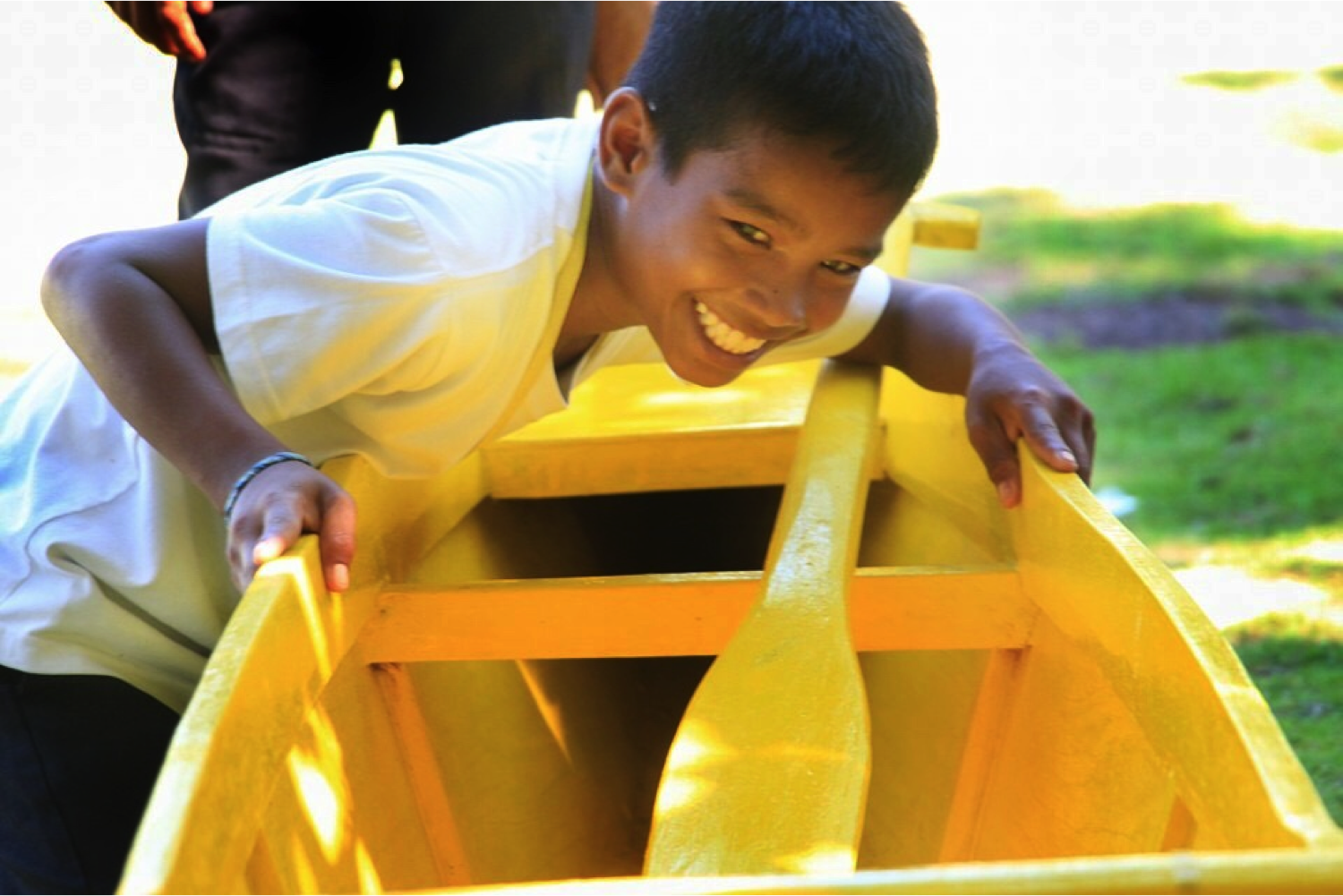 Photo credit: Yellow Boat of Hope Foundation
Photo credit: Yellow Boat of Hope Foundation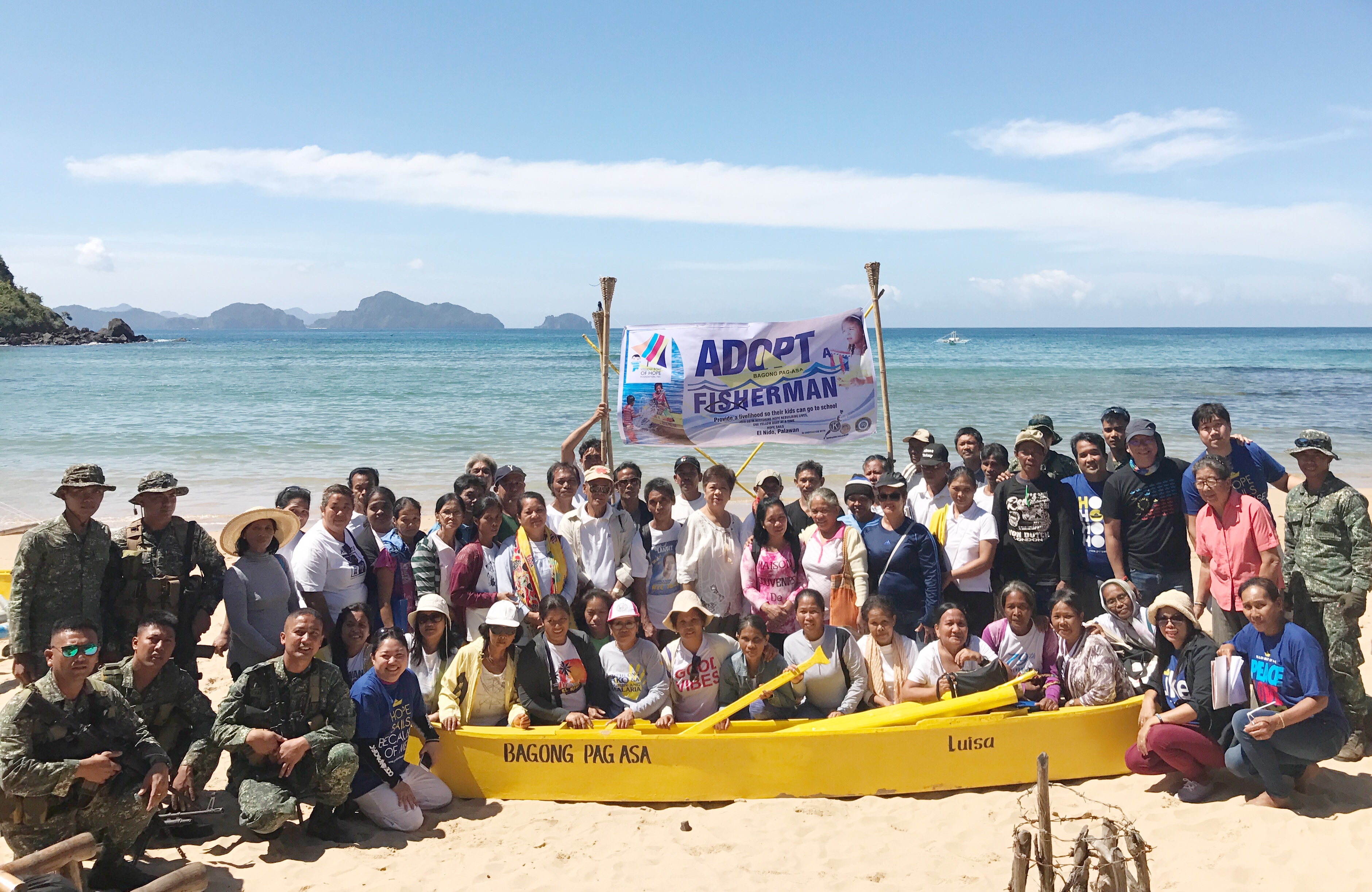 In the Photo: Adopt a Fisherman program, El Nido, Palawan. Photo credit: Yellow Boat of Hope Foundation
In the Photo: Adopt a Fisherman program, El Nido, Palawan. Photo credit: Yellow Boat of Hope Foundation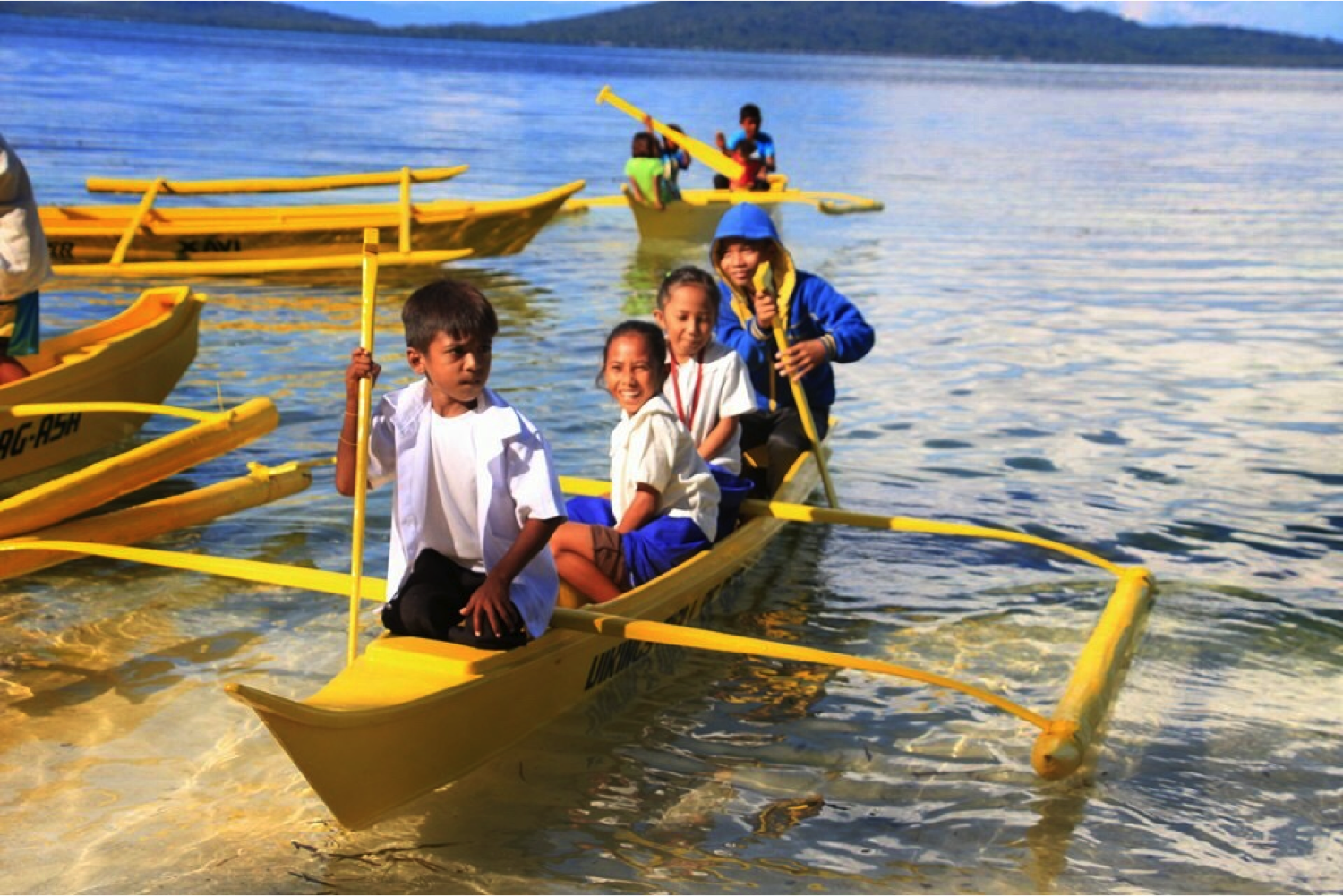 Photo credit: Yellow Boat of Hope Foundation
Photo credit: Yellow Boat of Hope Foundation